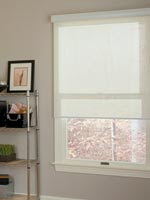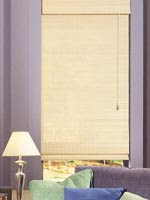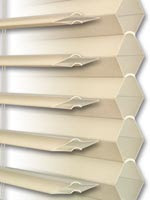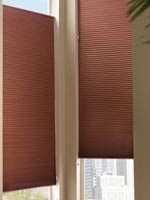 Q: I've heard that there are some shades that can act as a barrier between the window and your home to help prevent heat loss. Is this true? Can you tell me more about them?
Q: I've heard that there are some shades that can act as a barrier between the window and your home to help prevent heat loss. Is this true? Can you tell me more about them? A: Cellular shades are unique in their structure and function since they trap air between the window and the rooms in your home. Each air pocket, or cell, runs horizontally across the width of the window and opens to trap air when the shade is pulled down. And when the shades are pulled up, they resemble standard horizontal blinds, making them easy to install and coordinate with existing window treatments.
The air pockets, or cells, of cellular blinds come in a variety of sizes and often appear in different cell widths. Smaller size cells have less thickness but are usually layered to provide greater insulation against your window. Larger cells are usually left in single layers, making them better suited to larger windows where thicker slats or folds balance out the width and height of the glass.
Both small and large air pockets provide additional insulation against heat loss in winter and excess heat gain in summer. And cellular shades are gorgeous, too!!
























